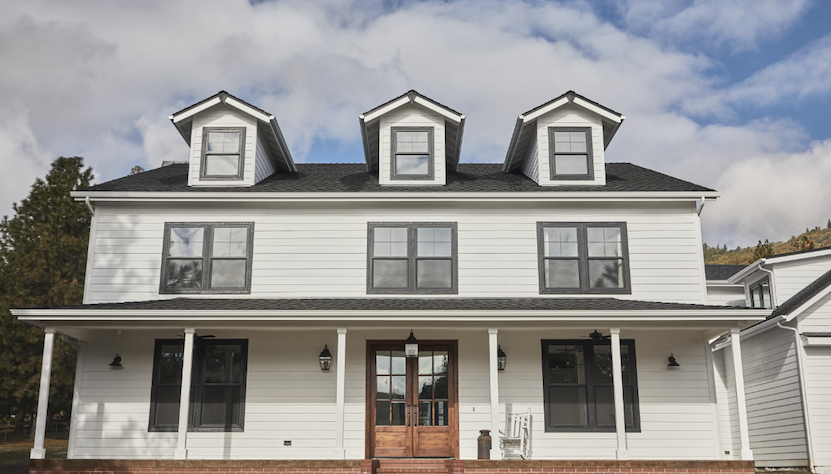Net zero homes are the industry’s peak performers, get insider perspective on why they’re so popular and how to build them for profit.
The future of home building may be zero. “The best builders are learning to build homes with zero net energy use,” says Sam Rashkin, chief architect at the US Department of Energy (DOE) Building Technology Office.
After leading the ENERGY STAR for Homes program for more than 16 years, Rashkin has raised the bar with the DOE Zero Energy Ready Home program. Yet most home buyers are unaware of net zero building or that it’s even an option. Complete the form below to see which builders have gone all in on net zero and why they’re betting big on this next frontier.
To earn the Zero Energy Ready Home label, a home must score in the low to mid-50s on the Home Energy Rating System (HERS) Index (a score of 100 is code minimum). Add a modest solar array, and the home will put more energy into the grid than it uses on an annual basis.
It’s an effective strategy. Milwaukee-area Tim O’Brien Homes opened Wisconsin’s first zero energy neighborhood in late 2017. According to Craig North, vice president of Product Innovation, the 34 lots presold faster than any of the company’s other neighborhoods.
Another builder who has gone all in with net zero is Tampa-area Marc Rutenberg, of Marc Rutenberg Homes. Rutenberg just opened a “no electric bill,” LEED Platinum, net zero model home, and is breaking ground on a 14-home zero energy village.
Home buyers have been enthusiastic. “Most didn’t know this was an option,” says Rutenberg. He adds that while building to net zero adds cost, the energy savings more than compensate for the increased mortgage payment.

Top-quality windows help seal the envelope to keep net zero homes as energy efficient as possible.
Sales success
Both Rutenberg and North help buyers understand bottom-line monthly costs, which include mortgage payments, energy bills, and maintenance. That’s where the HERS rating comes in: it quantifies a net zero home’s lower cost of ownership.
Realtors and buyers are catching on. Some multiple listing services now list HERS scores, and a 2016 study by the North Carolina Building Performance Association found a strong link between a lower score and a higher sale price.

Low-E glass is critical for reducing heat transfer and saving energy.
The right building products
Great insulation and air sealing are crucial to a low HERS score, but net zero builders go further. “We scrutinize everything from the HVAC system to the motor on the garage door opener,” says Rutenberg. He insists on ENERGY STAR appliances, LED lighting, and top-quality windows. “We spec a JELD-WEN window with triple Low-E glass, regardless of whether it has a vinyl or a clad wood frame.”
Rutenberg is shooting for a negative HERS score—a house that generates more power than it consumes. That’s why he opts for triple glazing. However, Jason Kantola, JELD-WEN’s coordinating certification manager, says that a double-paned ENERGY STAR–rated window will often meet a builders’ net zero needs. “We have quoting tools and performance charts that make it easy to pick the right window,” he says.

Energy savings and great design are not mutually exclusive objectives.
Understanding the science
Net zero homes are more airtight than required by most energy codes. To guarantee healthy indoor air, they need proper ventilation. To avoid moisture issues, they need appropriate construction details. Getting everything right requires a firm grasp of modern building science.
The DOE offers online training, but Rashkin recommends live seminars, such as those put on by the Energy and Environmental Building Alliance (EEBA), which cover basic building science, mechanical systems, and the HERS Index. North says EEBA training has been invaluable in his company’s path to zero. “The lessons learned have been instrumental in differentiating ourselves from the competition.”
For assistance with window and door specification or installation, visit JELD-WEN’s professional portal.



